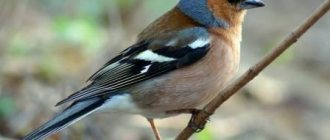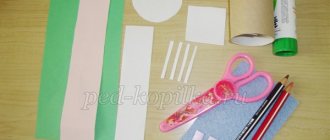Summary of GCD in the 2nd junior group “Getting to know poultry”
Summary of GCD in the second junior group
"Getting to Know Poultry"
Target:
1. Introduce children to poultry: chicken, rooster, goose, goose, duck, drake, turkey, turkey.
2.Give knowledge about the habitat: lives next to a person, a person takes care of them: feeds, waters, treats, builds a house (chicken coop).
3.Give knowledge about the benefits of poultry: laying eggs, hatching chicks...
4. Learn to correctly name poultry chicks: duckling, gosling, turkey.
5. Activate children’s vocabulary using words: lay eggs, hatch chicks, chicken coop, poultry yard.
6.Cultivate a friendly attitude towards others.
Material:
toy - cockerel, image of a rooster, hen, goose, goose, duck, drake, turkey, turkey and their babies.
Preliminary work:
conversation about poultry, looking at illustrations, reading stories and fairy tales about animals, and “Whose are you, baby?”
GCD move
Educator: -
Guys, did you hear? Who's knocking? I'll go have a look.
(I open the door. A cockerel comes in.)
Educator: -
Look who came to us?
(Children's answer)
Educator: -
Hello, cockerel, what happened? Why are you so sad?
Cockerel: -
I woke up very early today to wake up the sun. It always wakes up to my song. I went out into the yard, pecked some grains and peas, but I was in such a hurry to visit the guys. One pea got stuck in my neck. But I couldn’t sing the song and I was very upset.
Educator: -
Cockerel, don't be upset. The guys and I will help you. Let's give the cockerel some water. He drinks and the pea slips through his mouth.
(We treat the cockerel with water.)
Cockerel: -
Thank you guys, now I can sing loudly again.
(Sings.)
Educator: -
Cockerel, can the kids look at you? Look how beautiful and very important this cockerel is! It is immediately clear that he is the most important person in his house! Look, the cockerel has a head, a body, wings, paws and a tail. What's on his head? (Eyes, beak, comb, beard, wings, tail) What color is the comb and beard? (Red) What color is the tail? (Red, blue, green). Petya is a cockerel, but what can you do?
Cockerel:
— I really like to sing loudly. I can also peck grains, row with my paws, and flap my wings.
Educator: -
Petya is a cockerel, what did you bring us?
Cockerel: -
I brought a beautiful box with interesting pictures in it.
Educator: -
Let the guys and I look at your pictures. Petya, there are birds in the pictures, but they are all mixed up and cannot find their families. Let's help them.
(I show a picture of a duck.)
Educator: -
Who is this? (Duck) Who will we attach next to the duck? (Drake) Yes, it will turn out to be a duck family.
(We collect chicken, goose, and turkey families.)
Educator: -
You and I have found dads and moms, but who else is missing in these families? (Cubs) What are baby birds called? (Chicks, chicks)
(I show the children the chicks: chicken, gosling, duckling, turkey. I suggest placing them next to their parents.)
Educator: -
You and I helped the chicks find their families. Guys, all these birds are called domestic because they live next to humans. A man builds a house for them, which is called a chicken coop, and the chicken coop is located in the poultry yard. A person takes care of them: feeds, waters, treats. And poultry brings benefits: they lay eggs and hatch chicks.
“And now I’ll tell you a poem, and you listen and repeat all the movements after me.”
In our hut the rooster crows,
The little mouse sweeps the hut,
The cat is sewing pants on the window,
The chicken is scraping pots on the stove.
(Repeat the poem 2 times.)
Educator:
- Tell me what kind of poultry there are in this poem. (Hen and rooster). Look, guys, there's something else in the box. What bird do I have in my hands? (Rooster). Now I will give you the same pictures, and you look at what the cockerel is missing and complete the drawing.
D/game “Complete the Draw”
Educator: -
Guys, what kind of birds did the cockerel bring us? (Children's answers) What are these birds called? (Pets) Why are they called poultry? (They live next to a person. The person builds a house for them, feeds them.) What benefits do poultry bring? (Lay eggs, hatch chicks)
Cockerel: -
Thank you guys, you did a good job, tried to help my friends, pet birds, find their family. I've learned so much about myself, but it's time for me to go home to the coop. Goodbye.
3
Summary of educational activities for speech development in the first junior group. Topic: "Poultry"
MBDOU d/s No. 13 “Zvezdochka”,
Zelenogorsk, Krasnoyarsk region
Educator
Summary of educational activities for speech development in the first junior group.
Topic: "Poultry".
Program content:
- Introduce children to poultry. Enrich children's active vocabulary with nouns denoting the names of poultry (geese, ducks), adjectives (long - short) and adverbs (high - low). Introduce children to Ushinsky’s original work “Geese”. Continue teaching children finger painting. Form ideas about color (red, yellow, green). Develop children's articulatory apparatus. Develop motor activity. Promote the development of speech as a means of communication with adults and children. To cultivate interest in original works and an emotional response to musical works, to encourage children's initiative in choosing.
Equipment and materials: subject pictures “Poultry” (goose, duck), toys (goose and duck), drawing paper, finger paints, text of Ushinsky’s story “Geese”, musical accompaniment “2 cheerful geese”.
Progress of educational activities
On an easel in front of the children hang 2 pictures of a goose and a duck.
- Children, look who came to visit us today? Who is shown in the pictures? (goose and duck).
- That's right, it's a goose and a duck. The picture with the goose hangs high, and the picture with the duck hangs low. The goose has a long neck, and the duck has a short neck. The goose cackles “ha-ha-ga”, and the duck quacks “quack-quack-quack”. A goose and a duck are a bit similar: they have red beaks and legs.
- Look, I still have toys: “goose” and “duck”. choose the toy that you like best.
- Anya, what toy did you choose? (for example, this is a duck). Tell us about your toy. Where are the duck's legs and neck? Show me. Where is the duck's beak? What color is the beak and paws? How does a duck quack? (when communicating with a child, the adult seeks an answer with a simple sentence).
- Guys, which bird has a long neck and which one has a short neck? Right!
- Children, do you want to play with me?! The game is called "Two Geese". I will be a grandmother, and you will be geese - gray and white.
Physical exercise “Two geese”.
- What good geese: they stretched their long necks, washed their paws in a puddle and returned to their beloved grandmother.
- Children, I also know a very interesting story about geese. And I suggest you listen to him. (an adult reads Ushinsky’s story “Geese” and then talks about the text).
- What was the name of the owner of her geese? (tag - tag). And what did the geese answer to the hostess (ha-ha-ha).
— Guys, what do you think ducks and geese like to peck most? (grains).
- That's right, grains.
— Do you want to feed the birds grains? (Yes). Then follow me, choose your favorite picture with birds.
- Darina, what birds will you feed grains? And you, Matvey, what birds will you treat with grains?
Drawing "Seeds for ducks and geese."
— Our birds will walk around the clearing and peck the grains.
- Children, what color is the clearing? (green). What about the grains? (yellow). We will paint the grains with our fingers and yellow paint. (during the drawing process, the adult pays attention to accuracy so that each bird has grains, put a little paint on your finger and make a dot on the paper like this.)
“What great kids, they fed all their birds with grains.”
Final part.
At the end of the activity, the teacher invites the children to play the game “Geese - Geese”. An adult takes on the role of leader, and the wolf can be a child who takes the initiative.
Get text


